The ability to travel around the world can only feel like magic to some, but it comes with consequences. Traveling means bringing animals with us where we go and when we come back home. Animals that are not native to the area are considered invasive species, and the United States has quite a few animals invading the country.
Sometimes, animals are brought on purpose, and sometimes, they sneak along with ships and airplanes or inside people’s luggage. They are sometimes brought as pets or as secrets and eventually escape or are released into the wild where they do not belong.
Invasive species are considered biological invaders. In layman’s terms, an invasive species arrives where it once did not live and then makes itself at home and spreads itself autonomously.
One famous story of an invasive species is that of the European starling. You see, an intrepid man named Eugene Schieffelin is the cause of a whole lot of trouble. Mr. Schieffelin wanted to see all the birds that Shakespeare ever mentioned in his plays and decided America needed to play host to them all.
In doing this, he introduced a bird known as the European starling, and sadly, it took root. The European starling has interfered with native bird populations and has become a considerable nuisance as it has spread across the country.
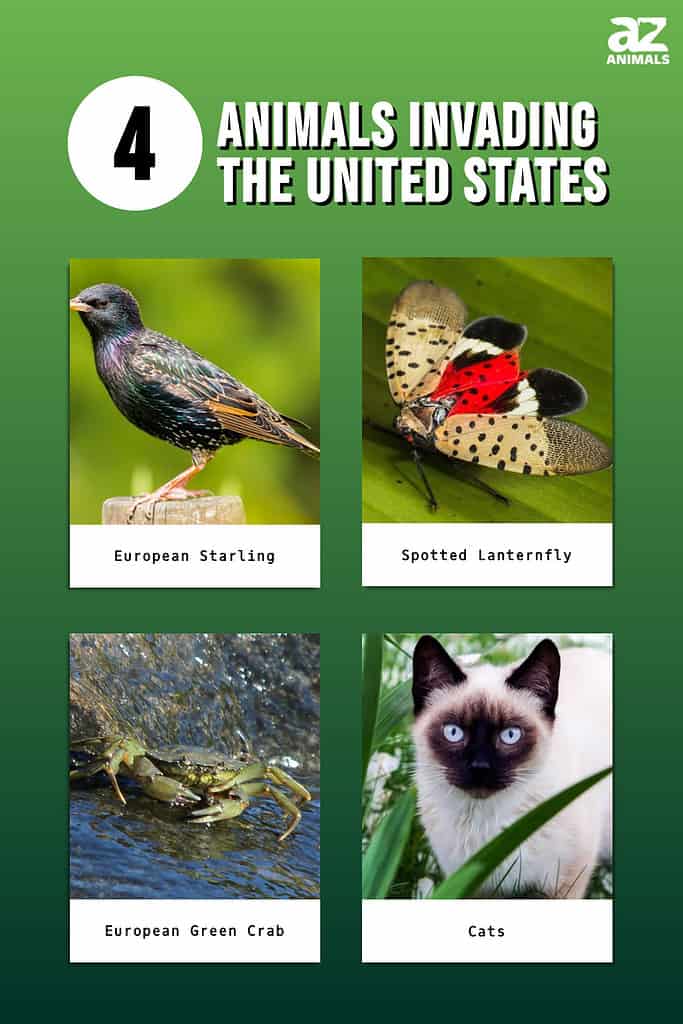
4 Animals Invading the United States
European Starling
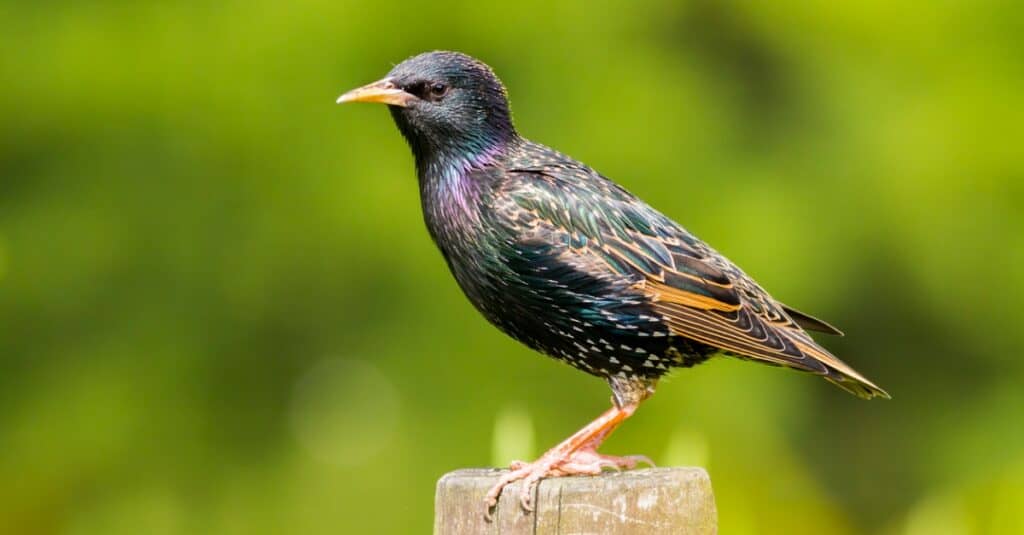
European starlings swarm together in thick mobs.
©iStock.com/chris2766
So we know that the European starling is an invasive species, but what exactly do they do that is so troublesome? Why do we dislike them so much? The answer isn’t hard to sus out. European starlings are known for their aggressive nature, and they outcompete native birds, which can affect the populations.
These birds swarm together in thick mobs and even caused a deadly plane crash in the 1960s. European starlings take to the skies in droves and destroy important crops like fruit and grains. They also contaminate water and food because they are disgusting birds, spreading diseases that harm food, water, animals, and even people.
According to the New York Invasive Species website, these birds do more than $800 million of damage each year.
None of this would be an issue if Mr. Schieffelin didn’t have the hubris to release a non-native species of bird and cause untold destruction through the years across an entire country. The United States now must contend with over 200 million European starlings across the states. That is just one example of an invasive species.
Spotted Lanternfly
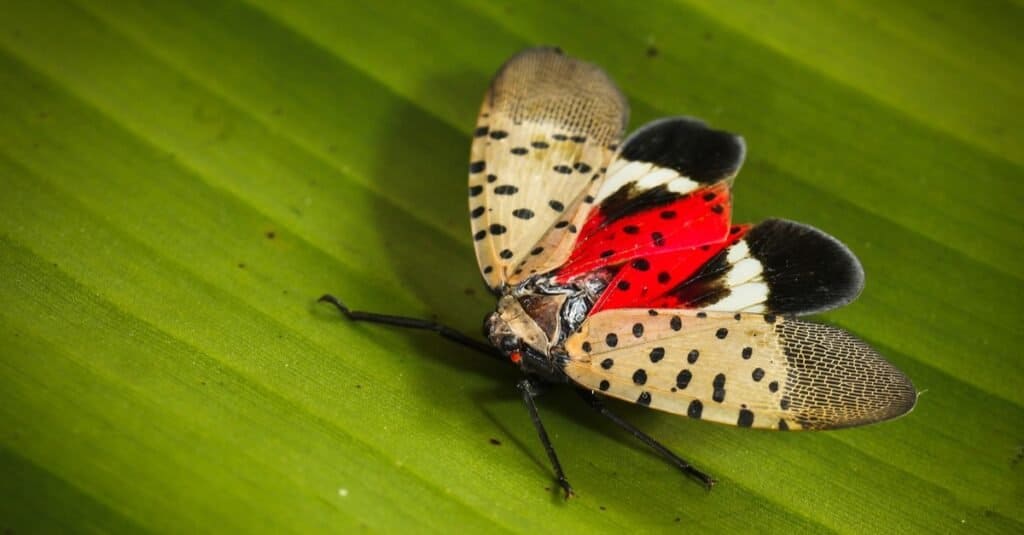
Spotted lanternflies are a worrisome species.
©vm2002/Shutterstock.com
Another nuisance is the spotted lanternfly. This insect is at first unassuming with its lovely tan and black speckled wings and red hind wings. But its effects are feared among those who know what it is capable of. First spotted in Pennsylvania in 2014, the spotted lanternfly is supposed to make its home in Southeast Asia, a long way away from rural Pennsylvania.
However this insect found its way, it’s here now and ready to cause rampant destruction. Spotted lanternflies are likely to seek out flowering plants like maple trees and consume crops like grapes or apples. They are currently quarantined in a few specific states (Pennsylvania, New Jersey, Maryland, Delaware) to not spread to Michigan, where they could foster the ultimate destruction.
European Green Crab
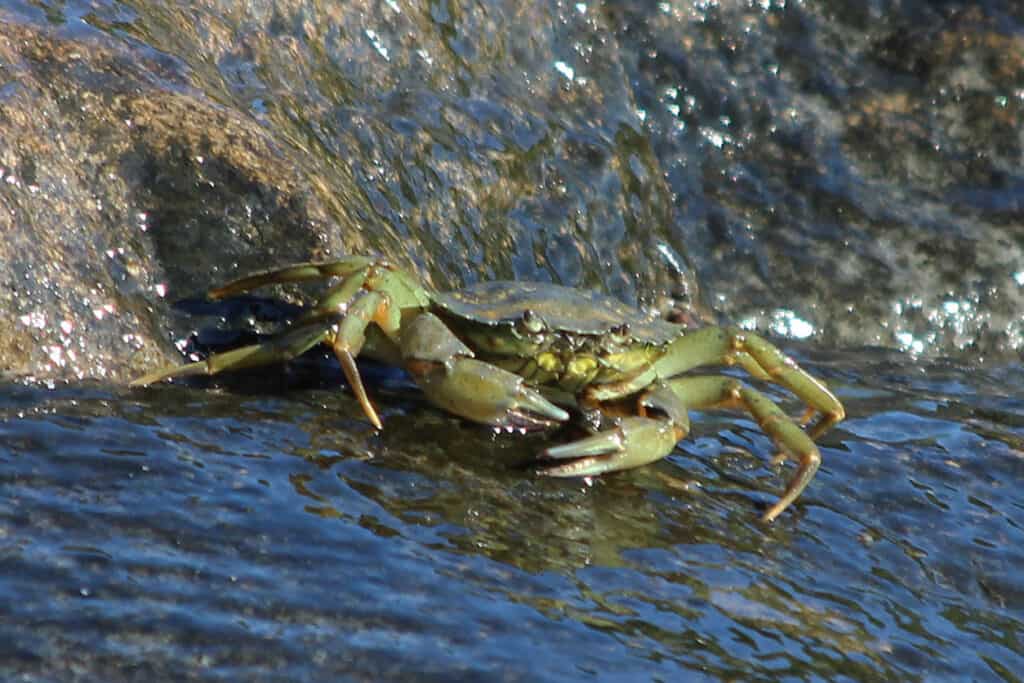
Green crabs cause a lot of trouble, outcompeting other shellfish native to the area.
©iStock.com/bririemoments
Another unlikely and unwanted culprit of disaster is found in Washington State. There is an invasive species of European green crab, and 102,000 of them were caught in 2021 alone. These crabs cause more trouble than many realize, outcompeting other shellfish native to the area.
This means they take up space and resources, pushing out other crabs. According to the USGS, they eat almost endlessly and can consume up to 22 clams in a single day. Also, while they rummage around underwater, they damage the sediments that line the seabed, causing a loss of eelgrass. Eelgrass is an essential habitat for other crabs and Pacific salmon.
Cats
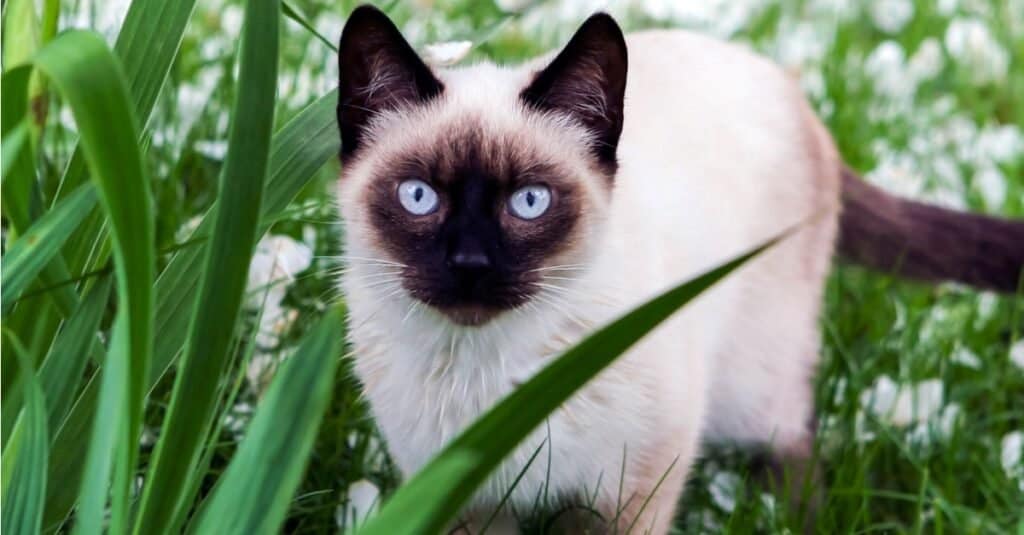
Domesticated cats are considered a hugely invasive species when not indoors.
©iStock.com/Vital Hil
Another dangerous invasive species is right under our noses, which we wouldn’t expect. Domesticated cats are considered a hugely invasive species. There is not enough evidence to show that they cause enough destruction to warrant the title on mainlands, but they have been known to destroy entire populations of species on islands.
The effect that cats have on wildlife, however, is undisputed. Studies show that cats kill between 1.3-4.0 billion birds and 6.3-22.3 billion mammals every year. Now, of course, some of those animals killed will be invasive species as well, such as the European starling. In that case, cats are doing us a favor.
It can be a good thing to have cats keeping some populations down in some cases. But in other areas, like in closed ecosystems like islands, they can cause total ruin.
Just keep in mind that not all animals are native to your area. So, if you have some exotic pet you are thinking of releasing into the wild, don’t do it. You could cause enormous problems for the United States otherwise.
The photo featured at the top of this post is © vm2002/Shutterstock.com
Thank you for reading! Have some feedback for us? Contact the AZ Animals editorial team.






